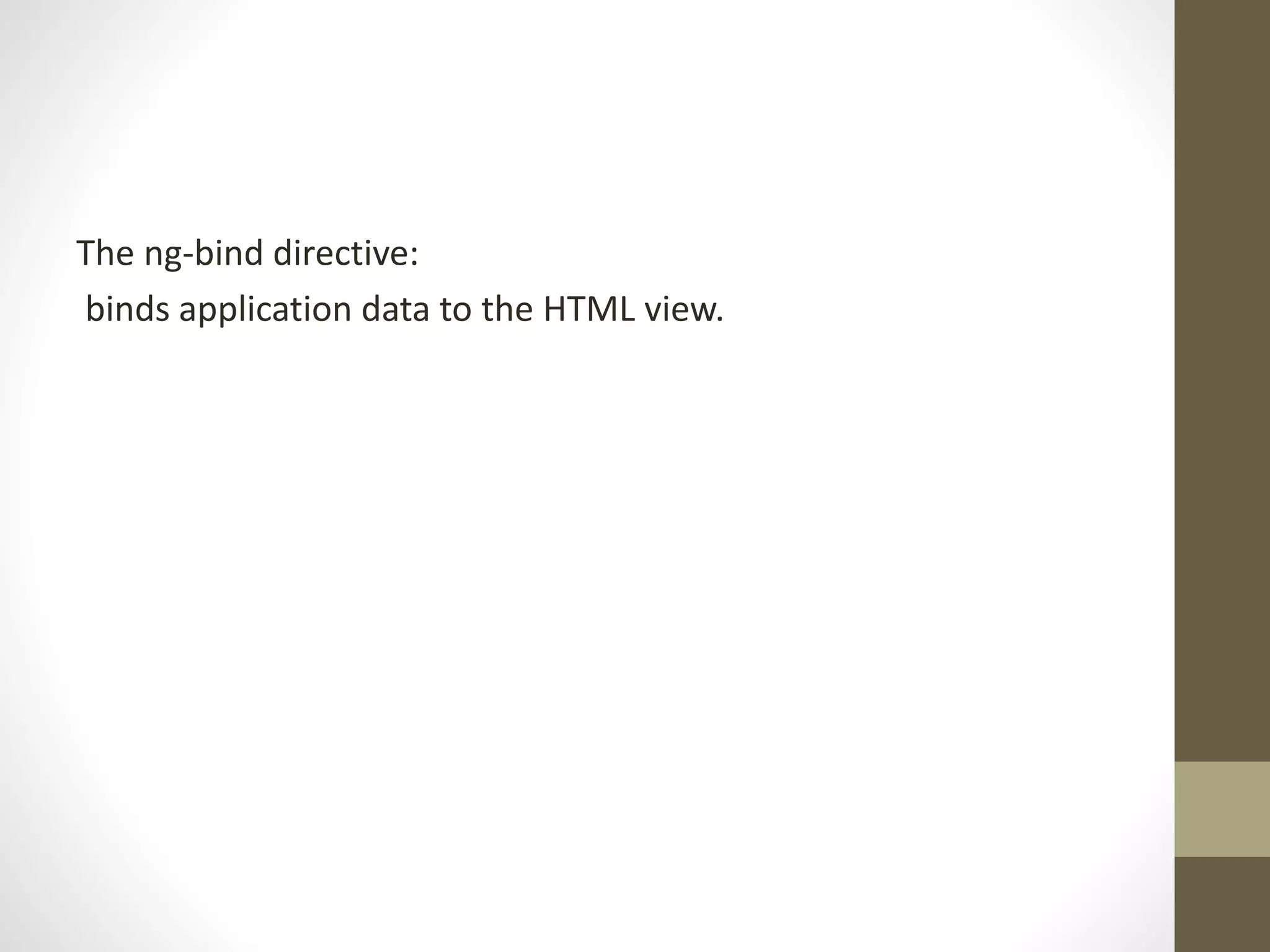The document provides an overview of key concepts in AngularJS including directives, controllers, scopes and data binding. It demonstrates how to get started with AngularJS by including the AngularJS script, using directives like ng-app, ng-model, ng-controller and ng-repeat. Controllers are used to define the application logic and bind data to the view using scopes. Data can be formatted for display using filters like currency.
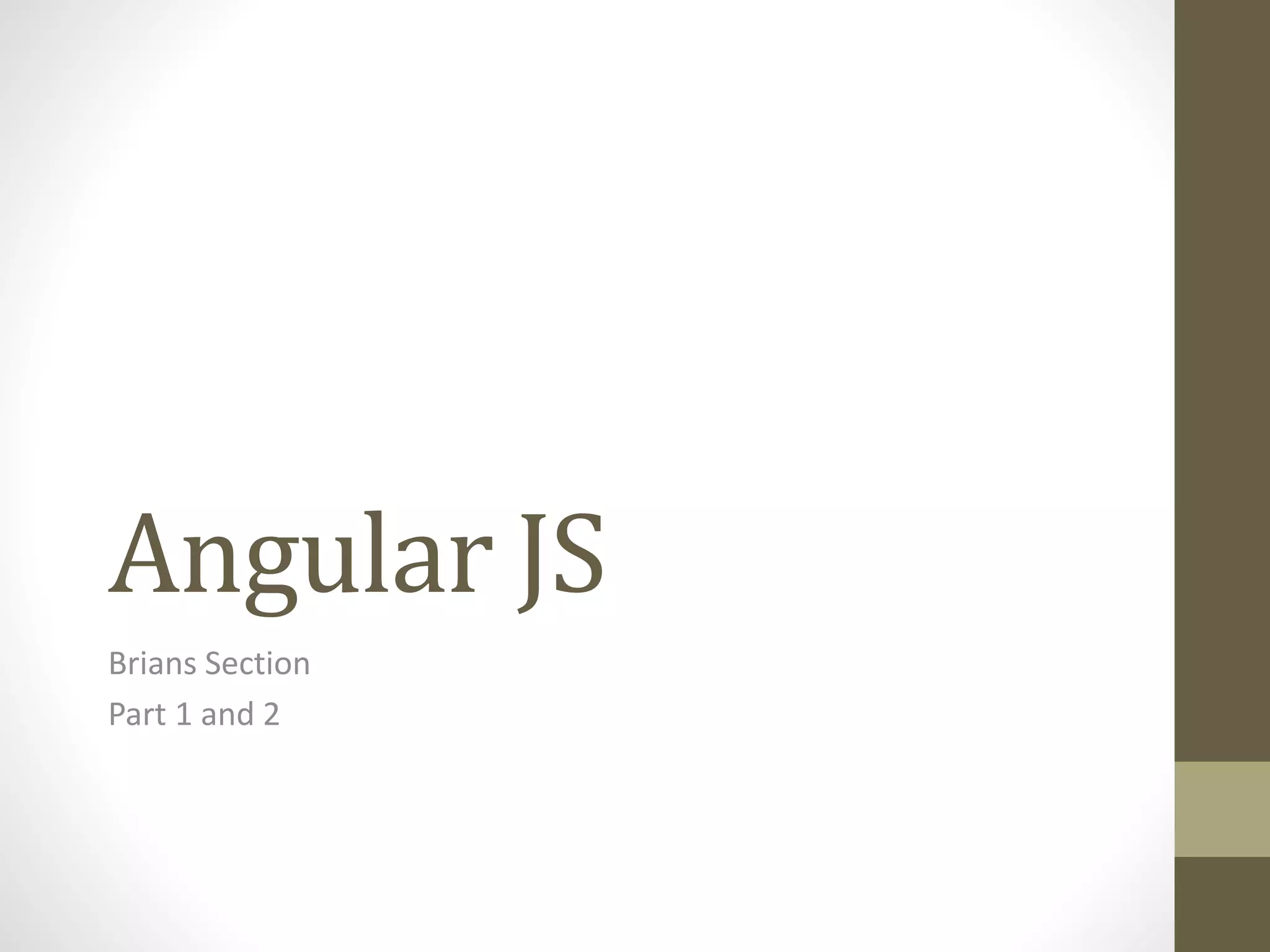
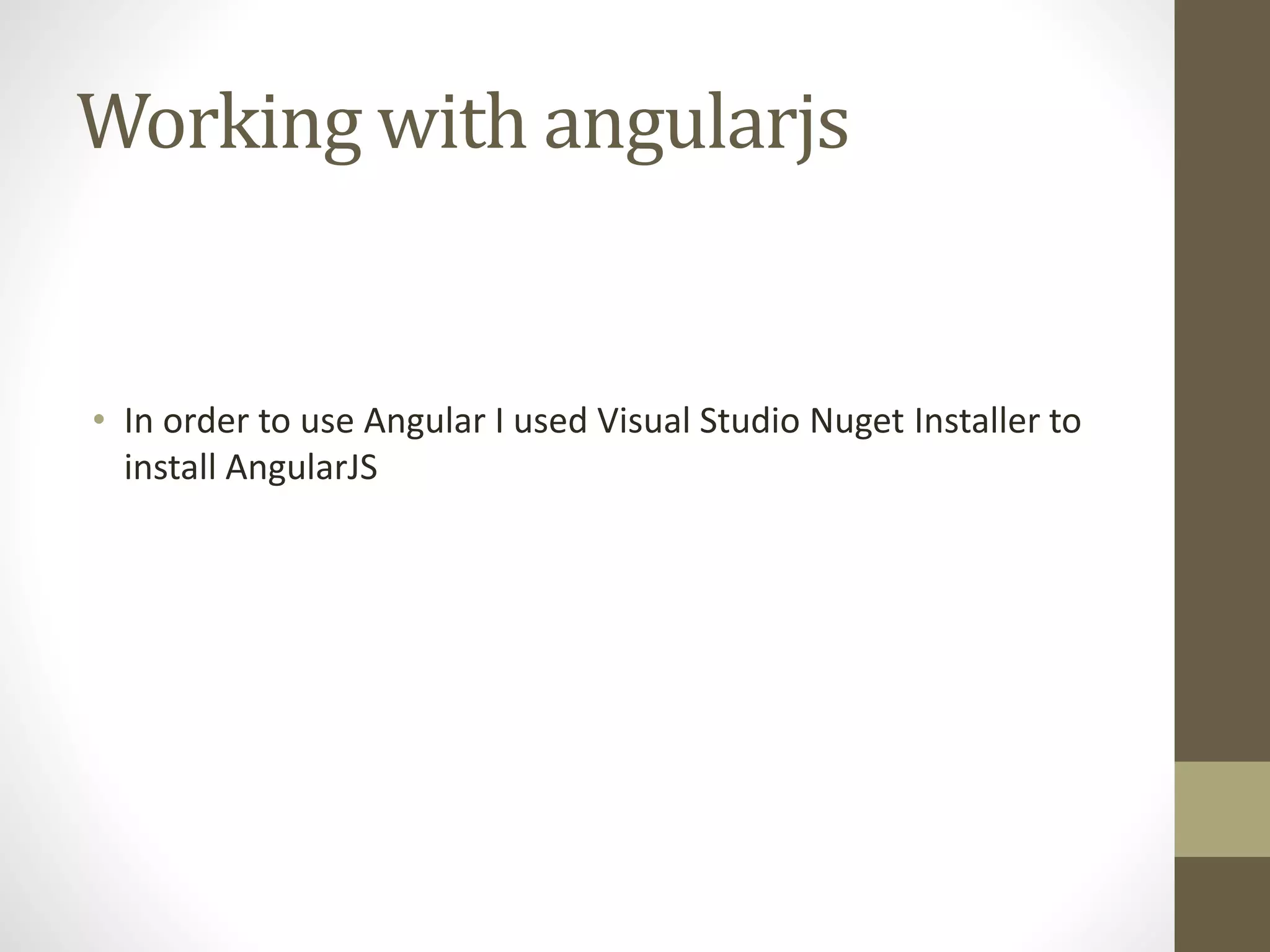
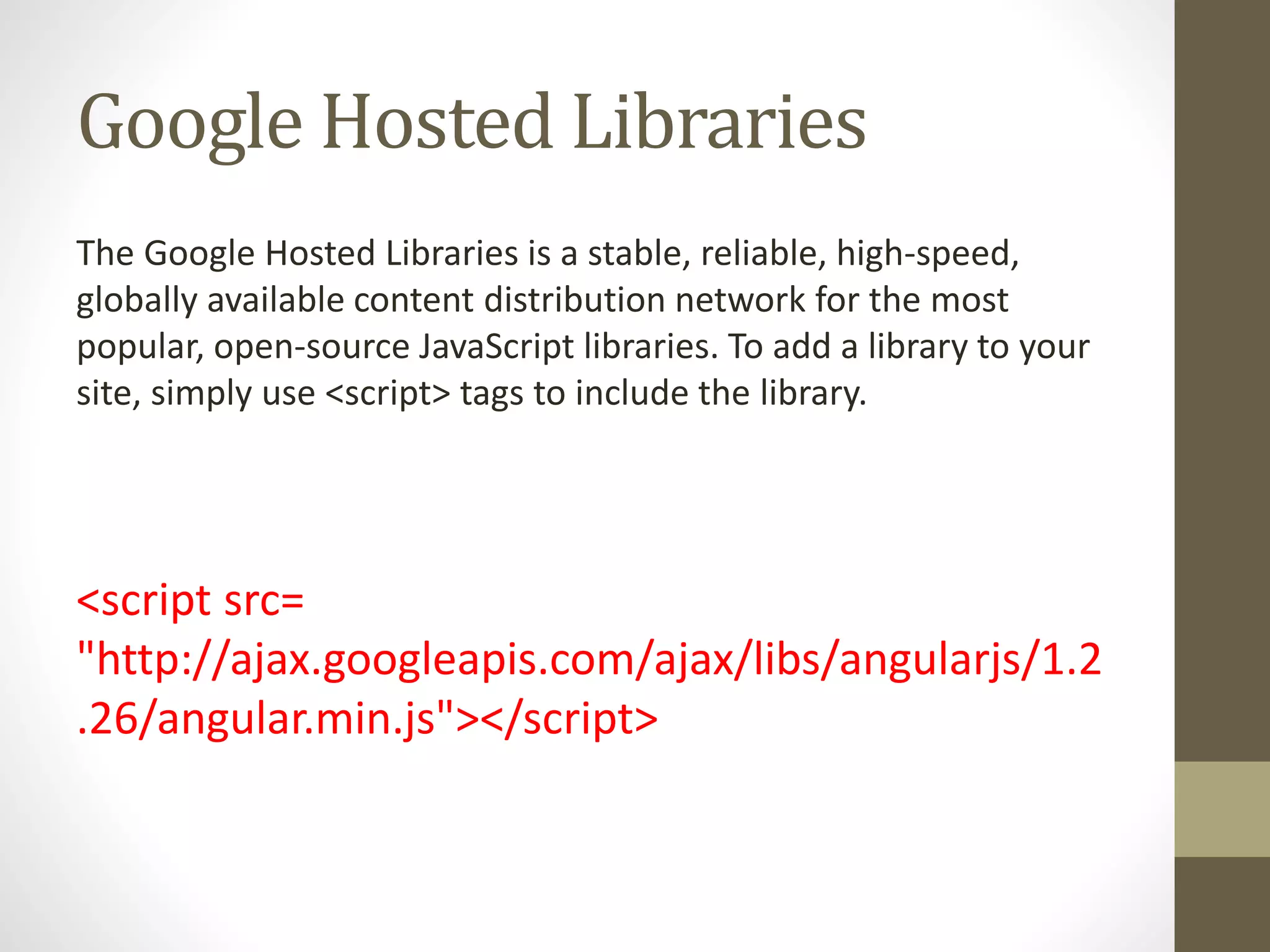
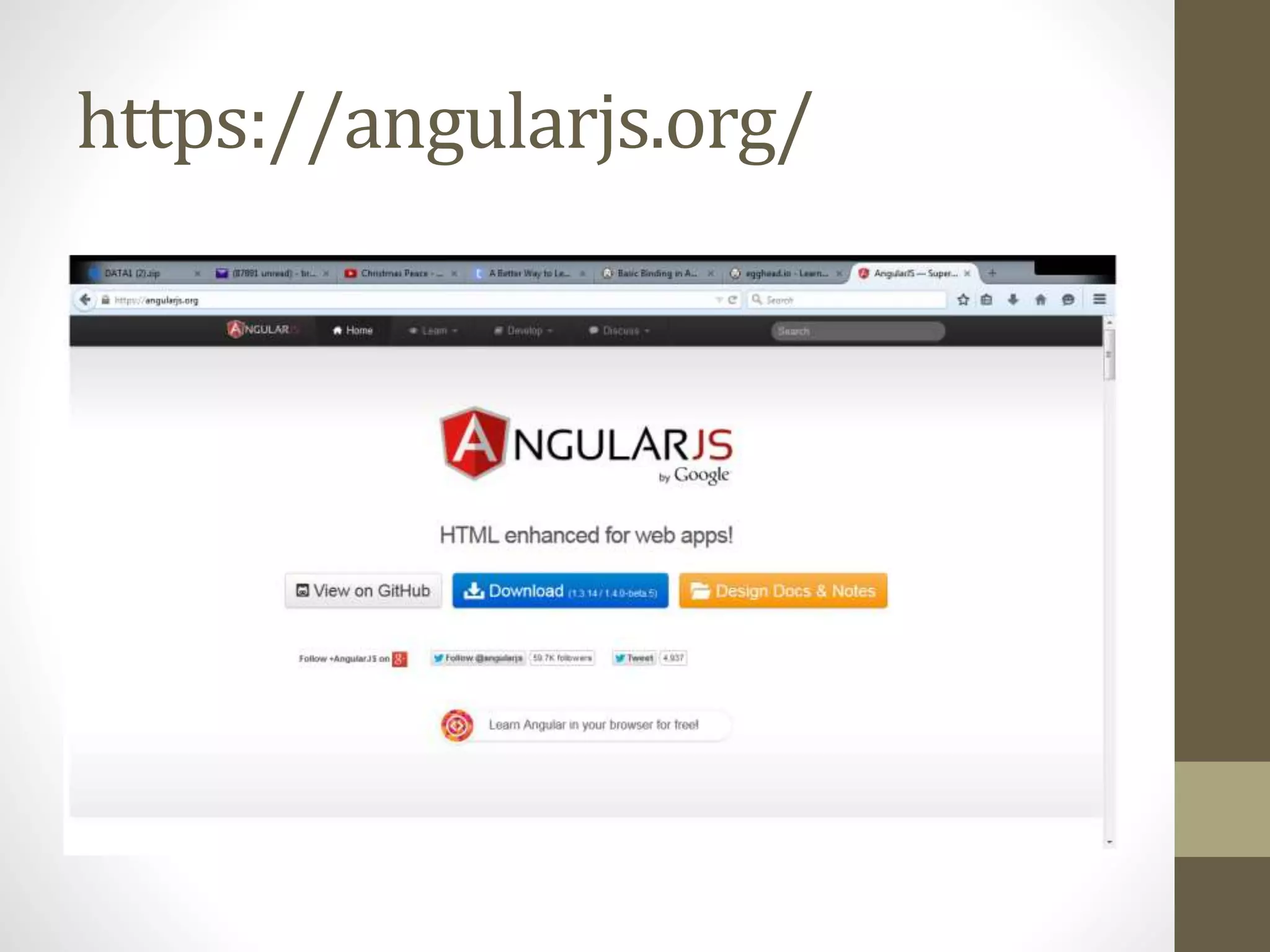
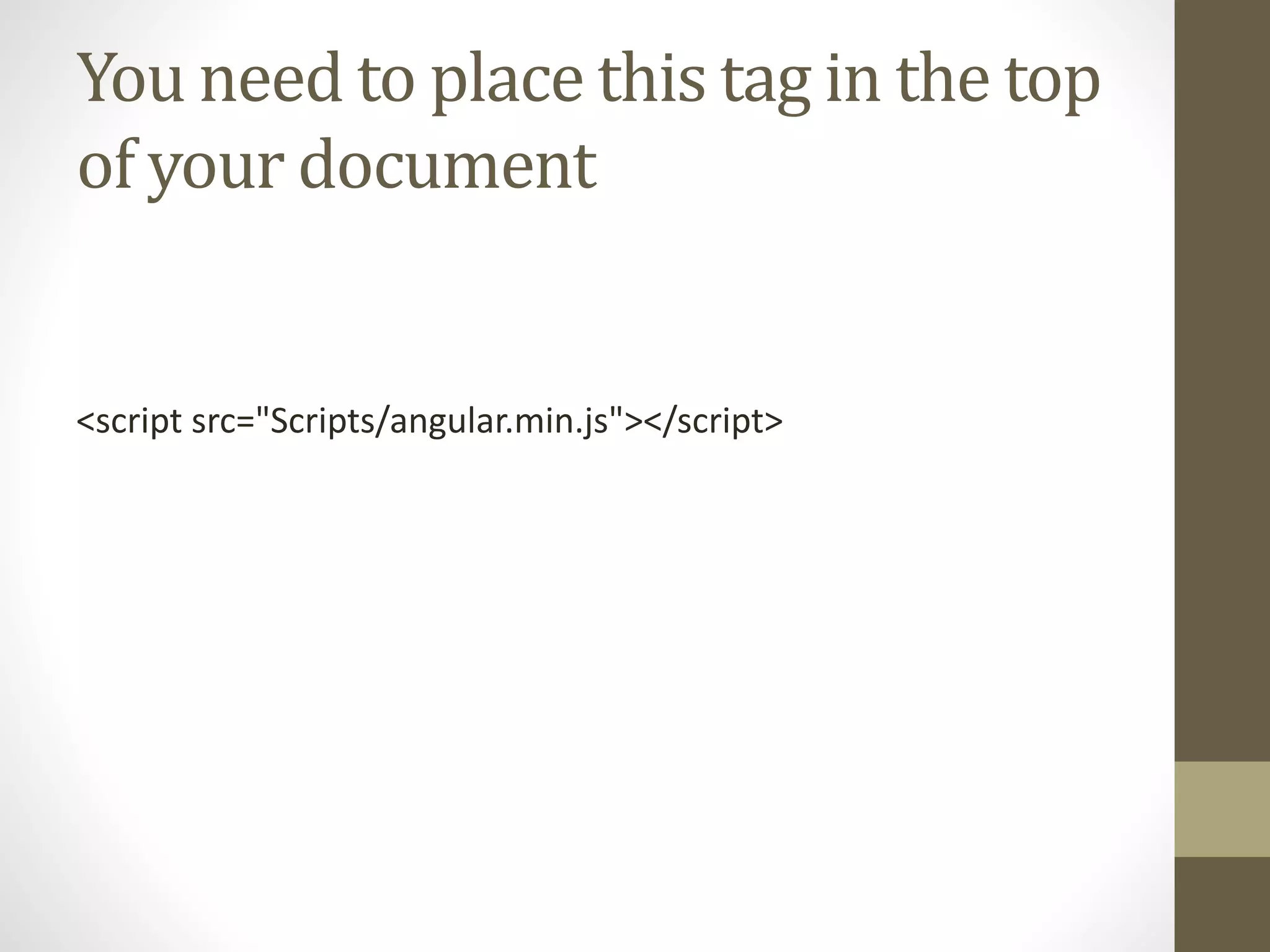
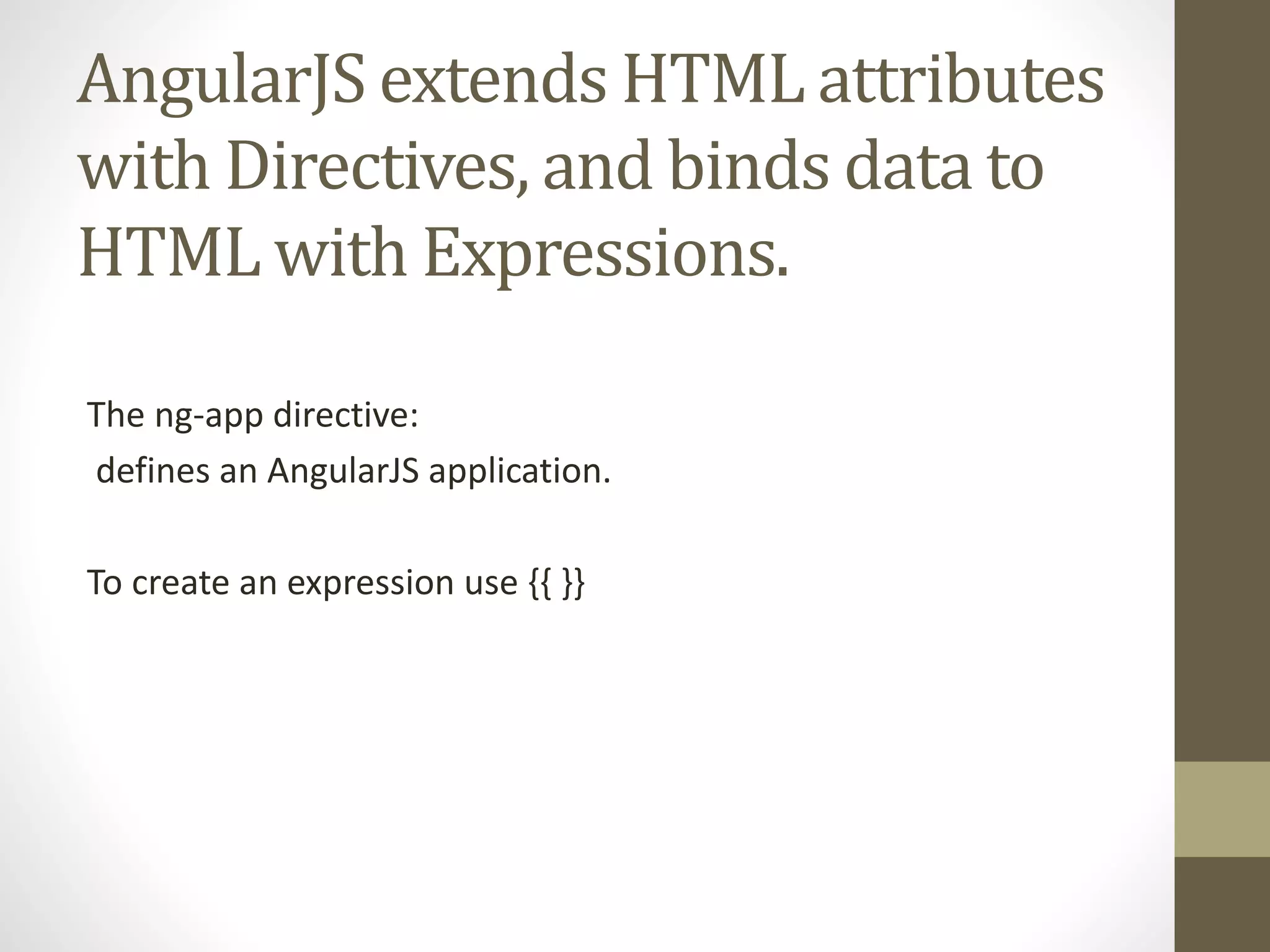
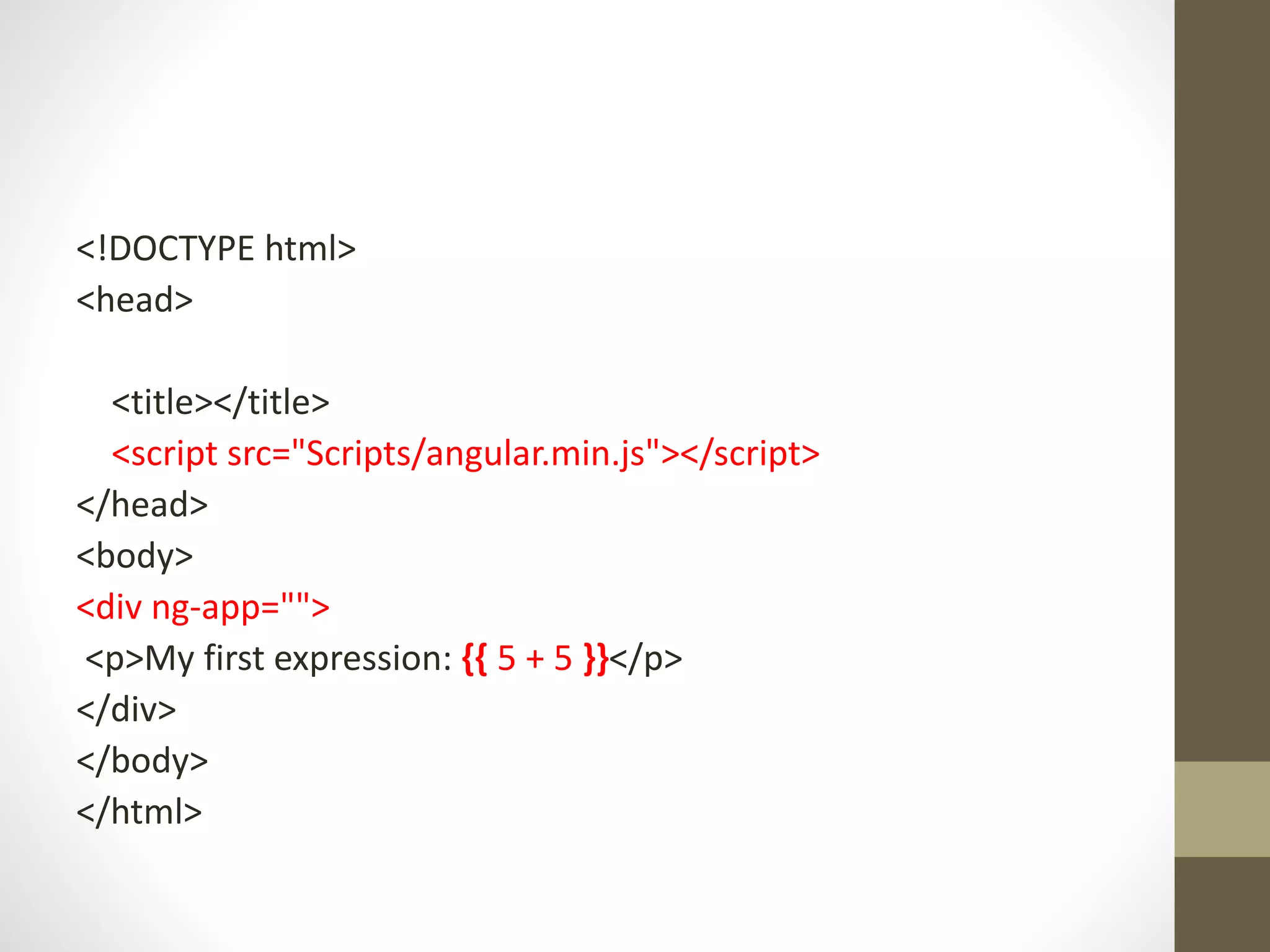
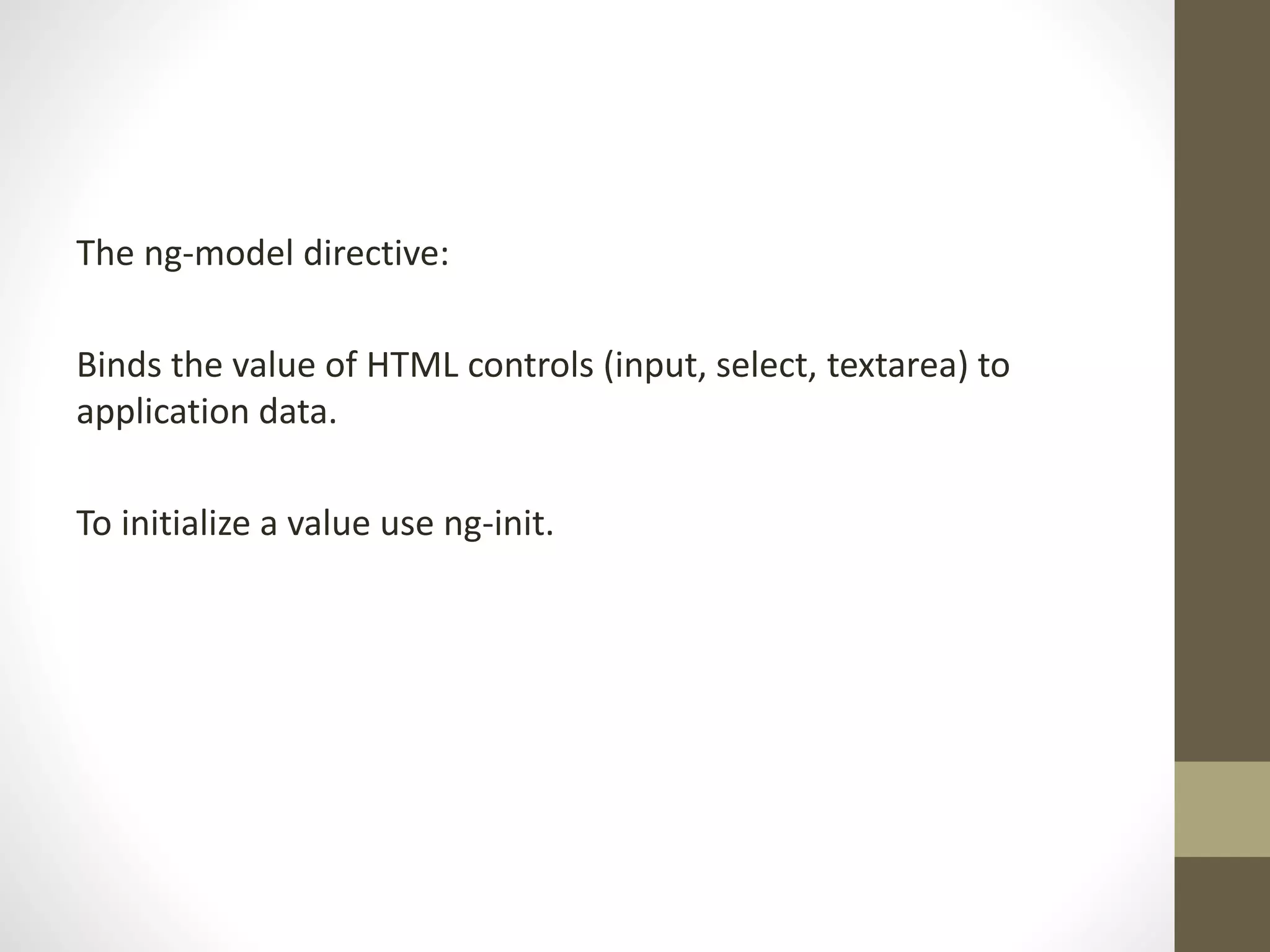
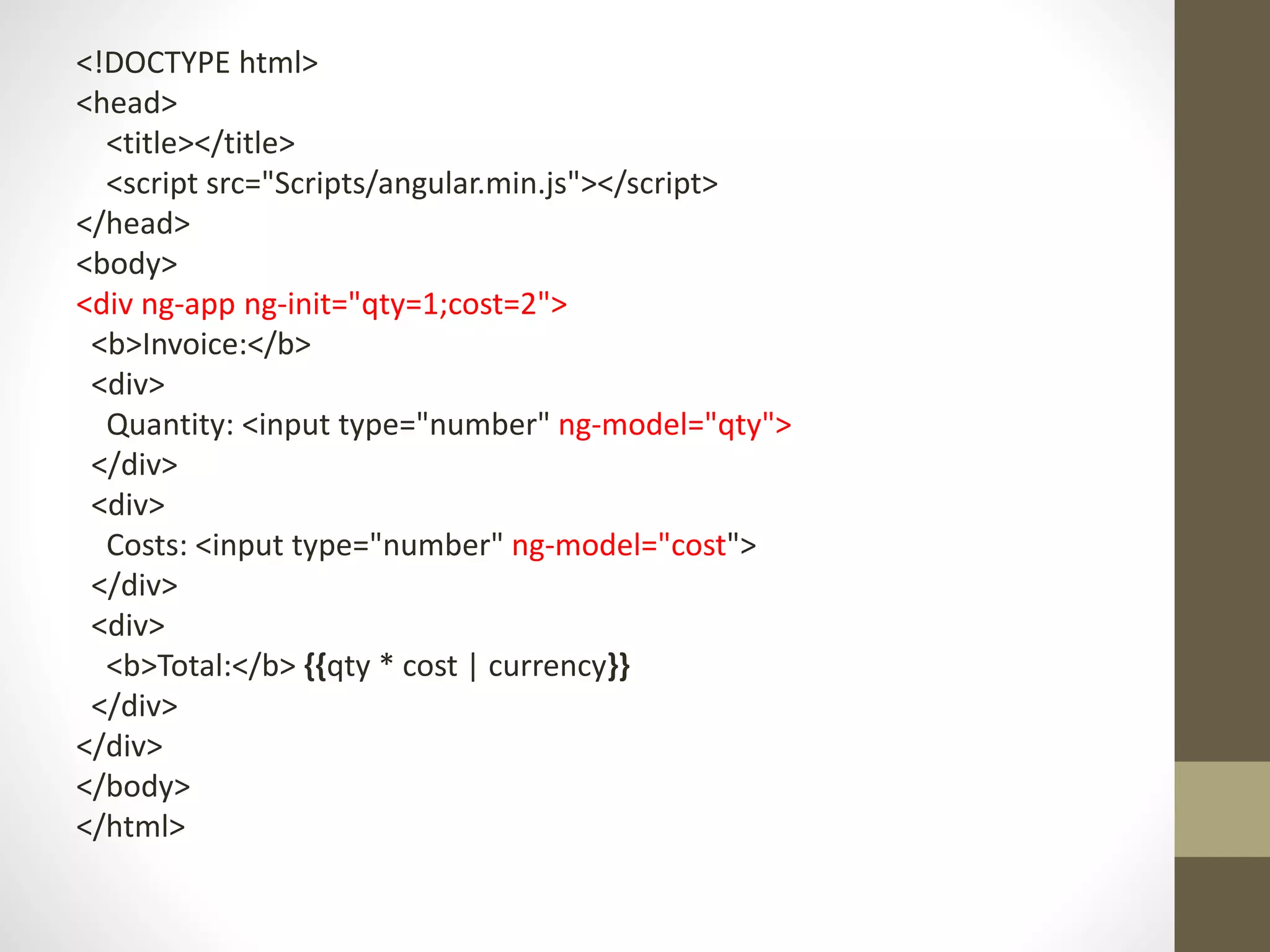
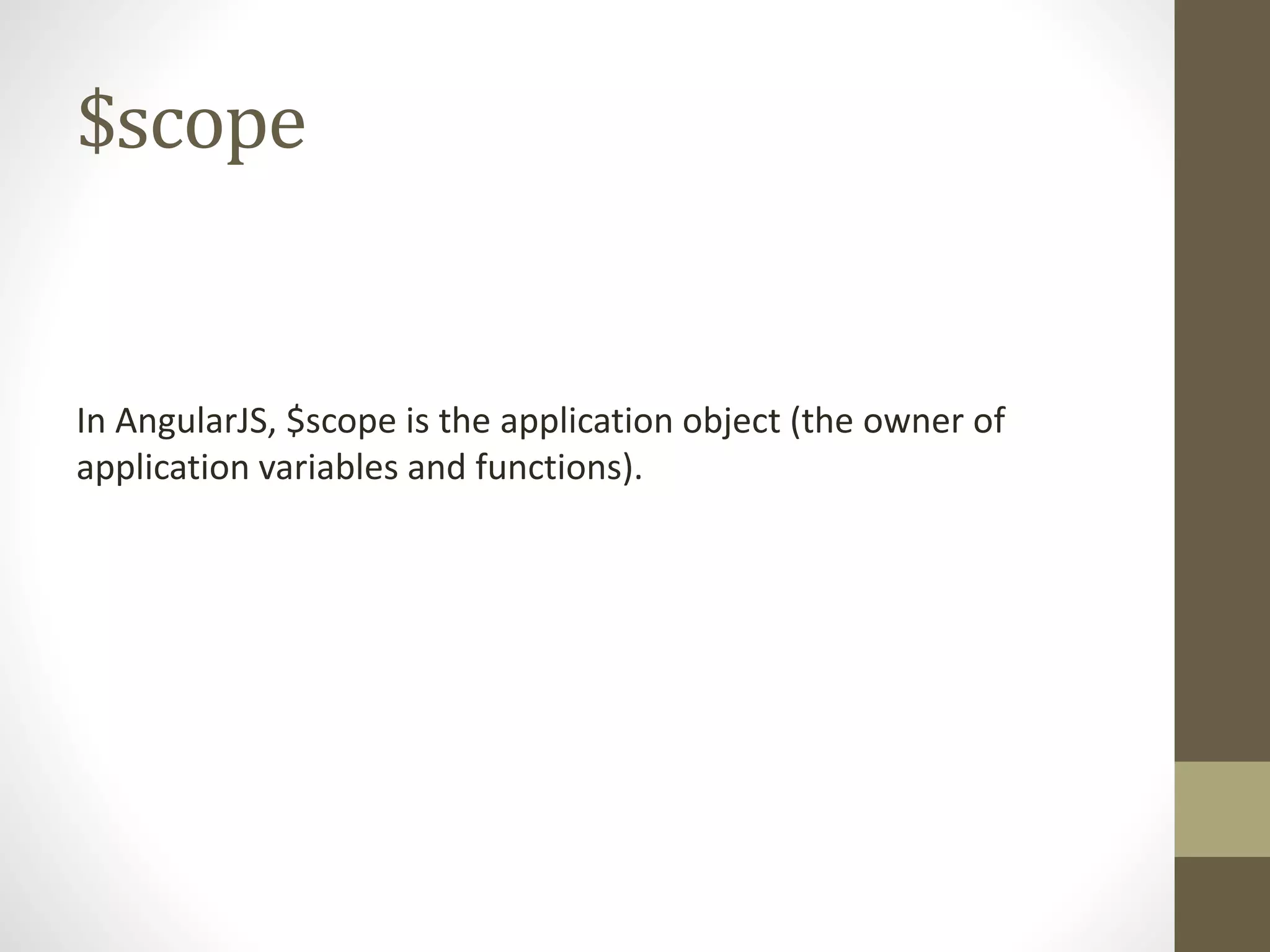
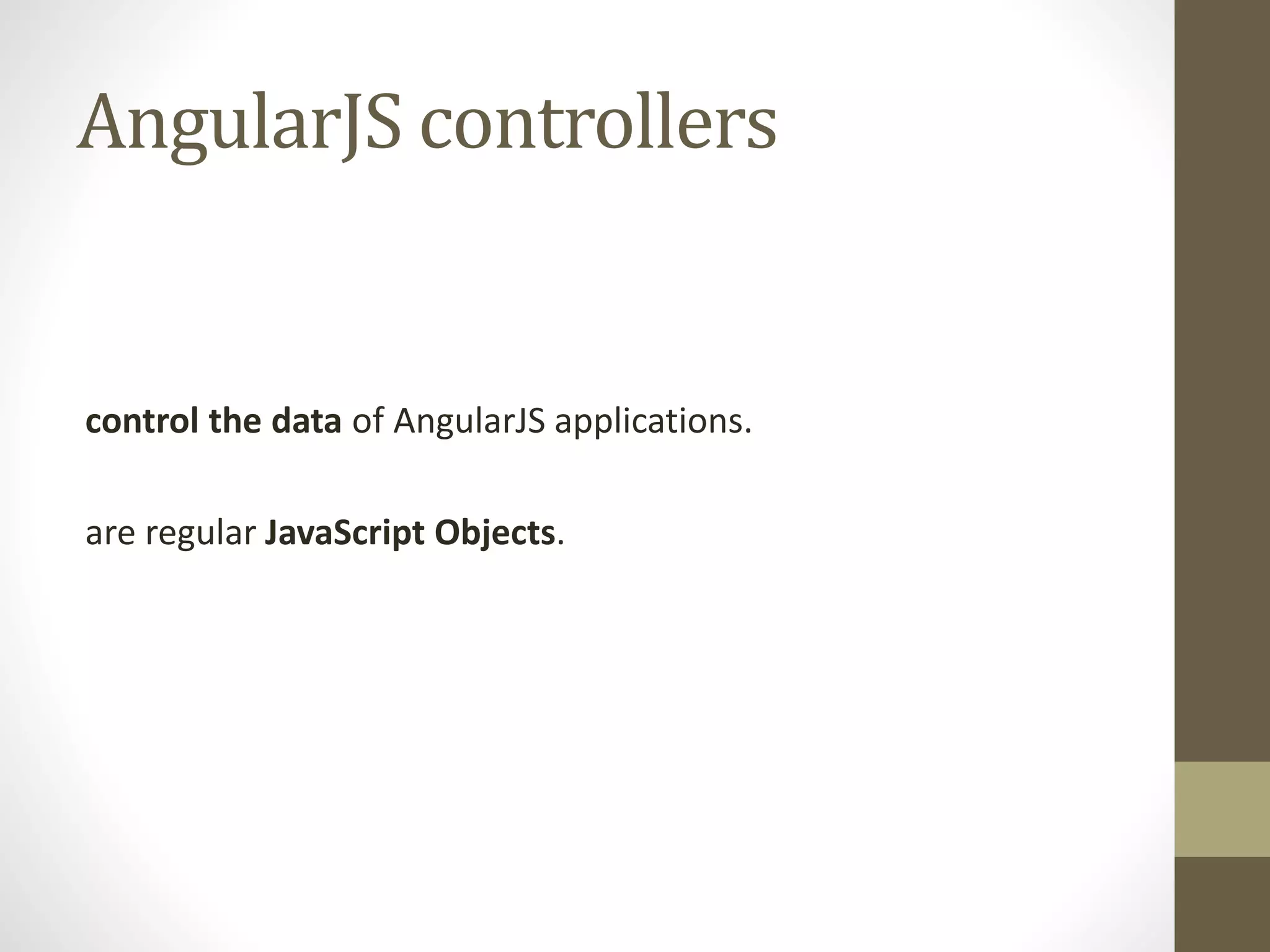
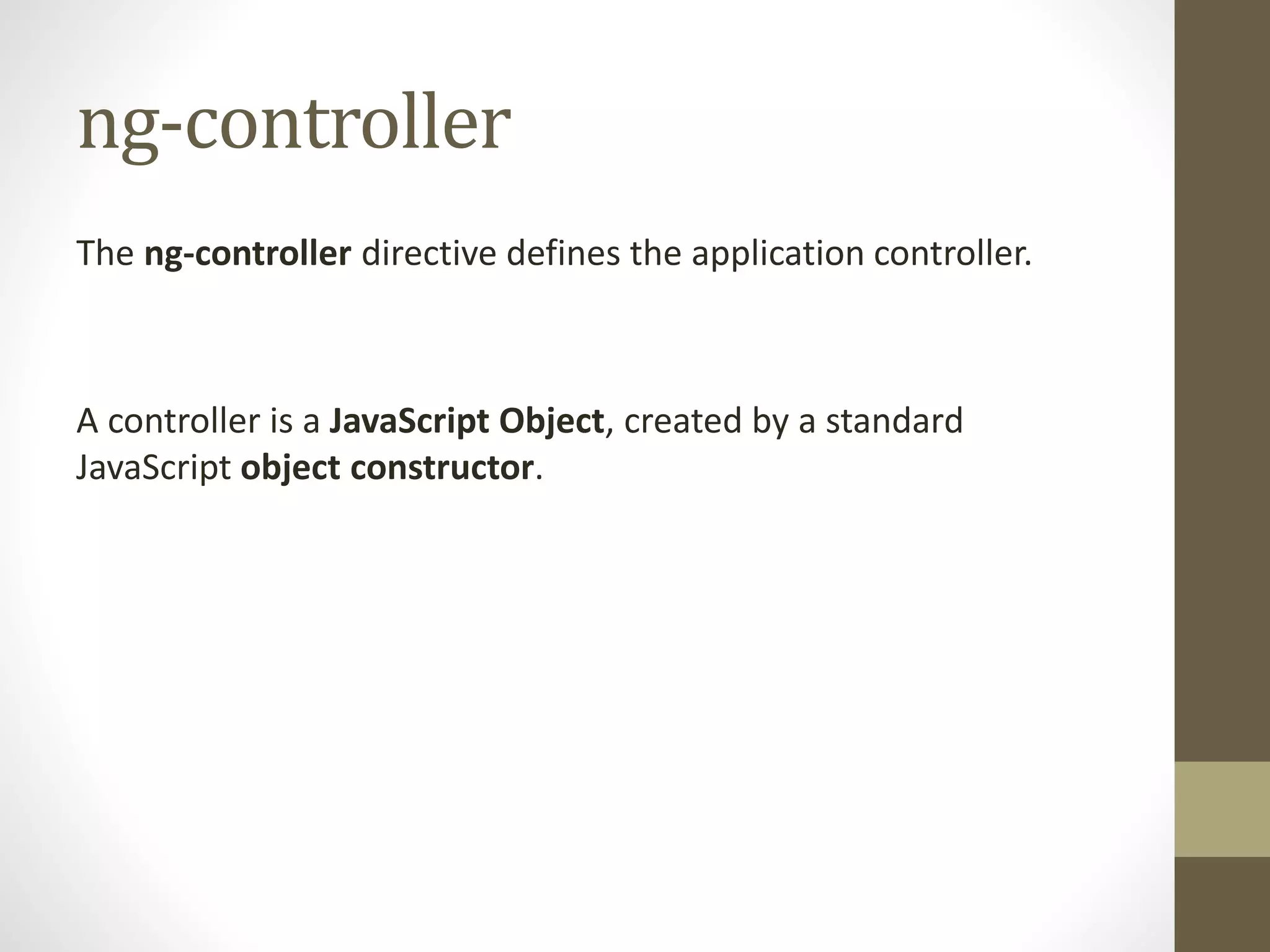
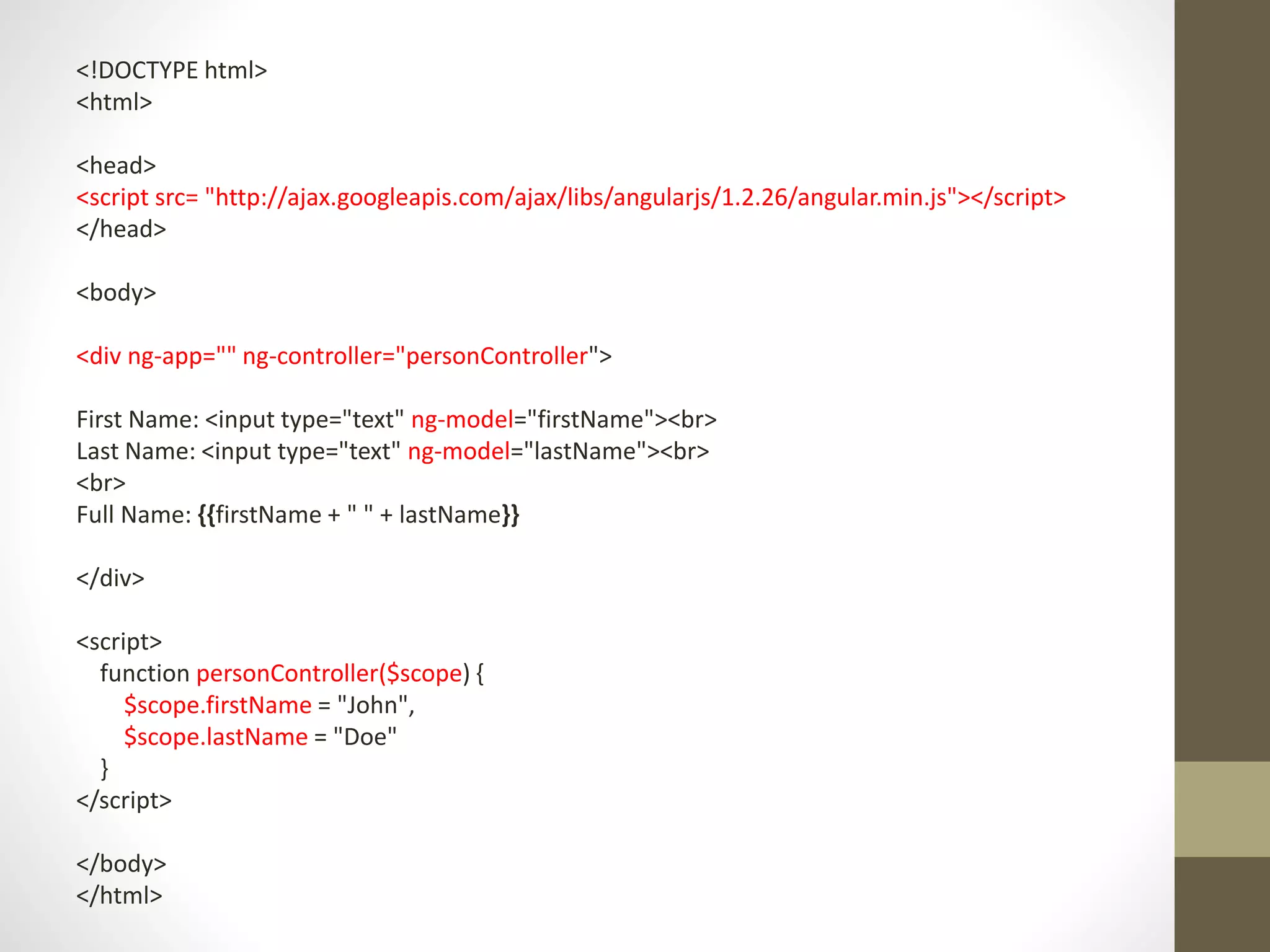
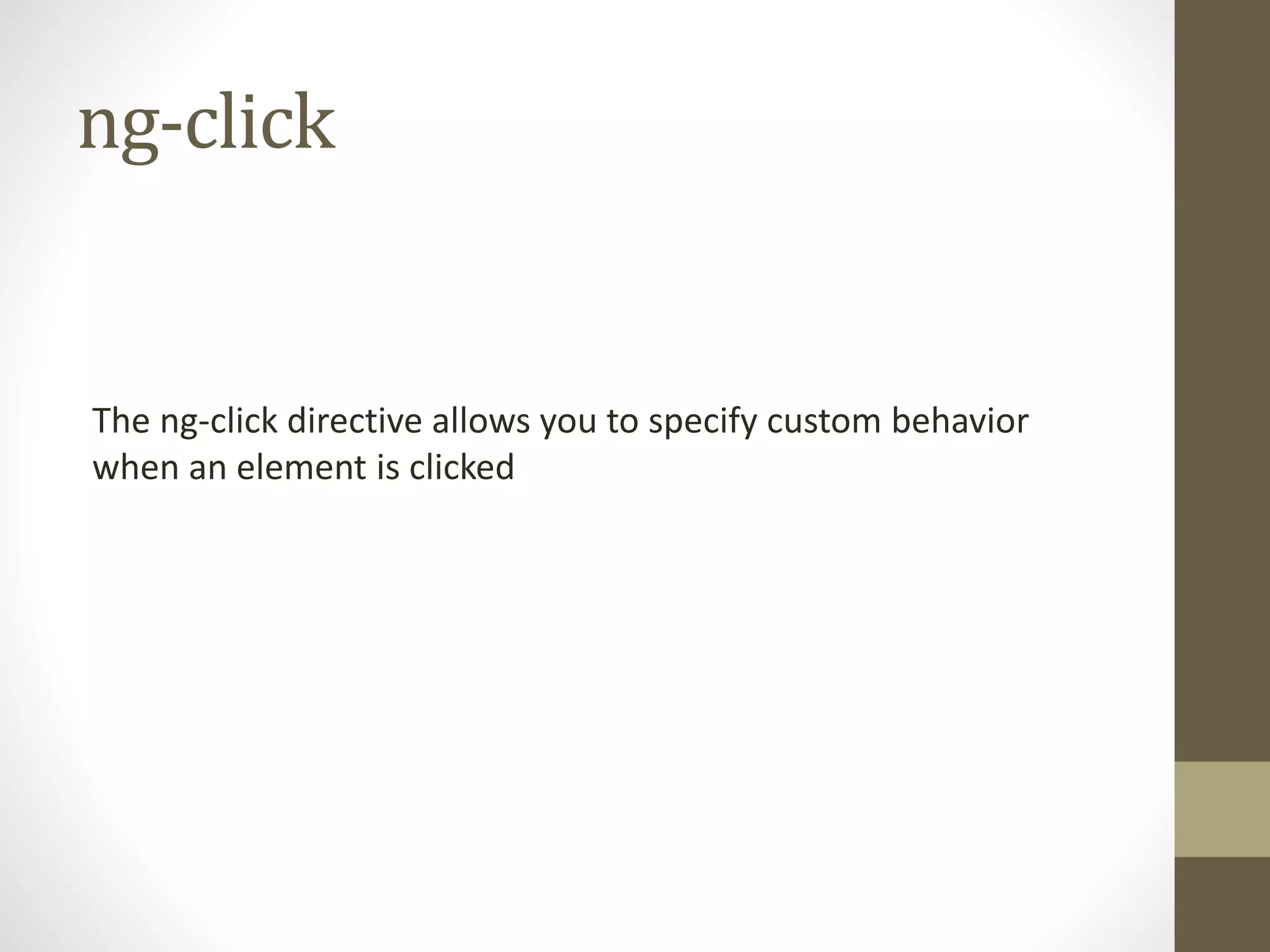
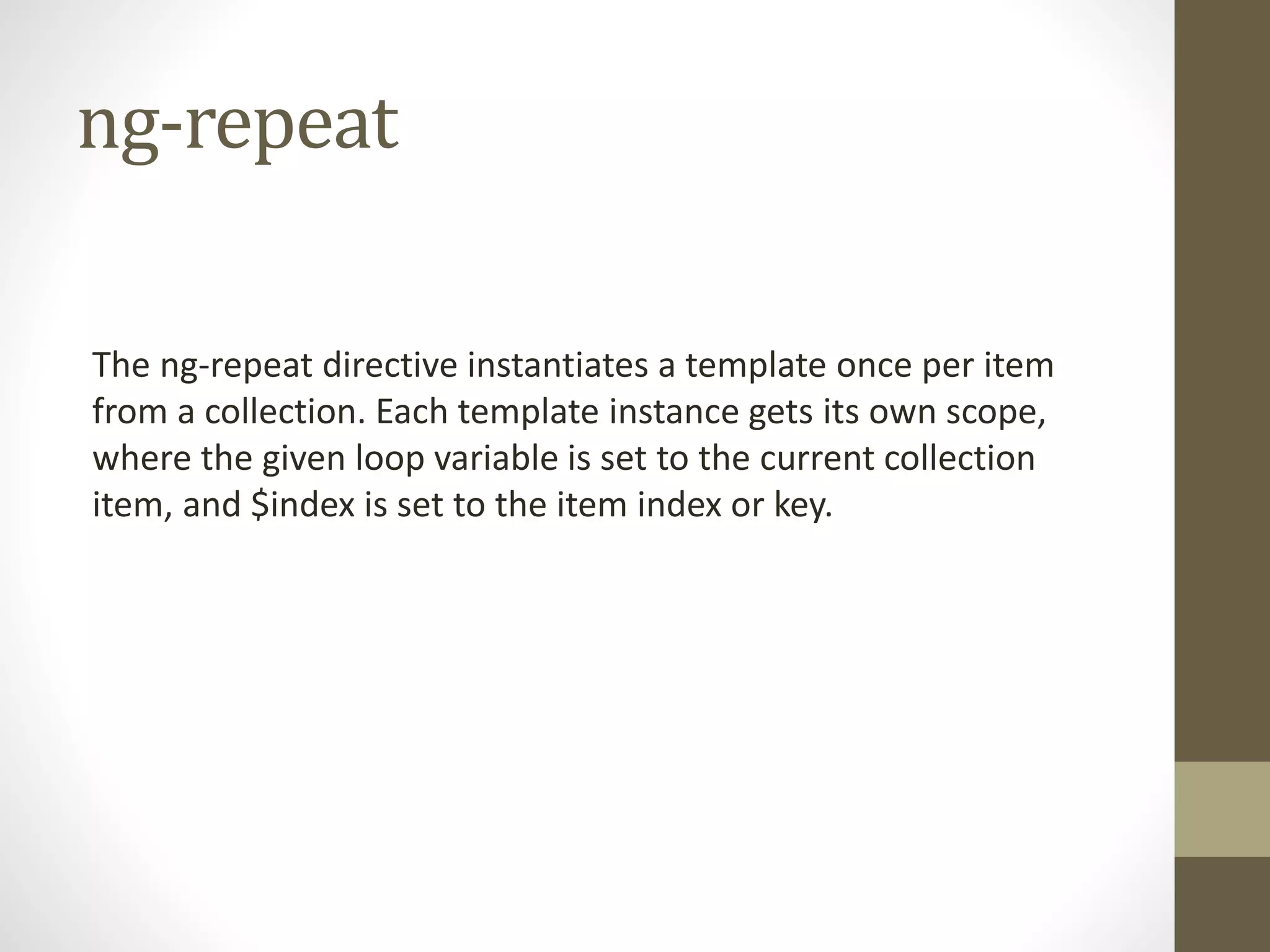
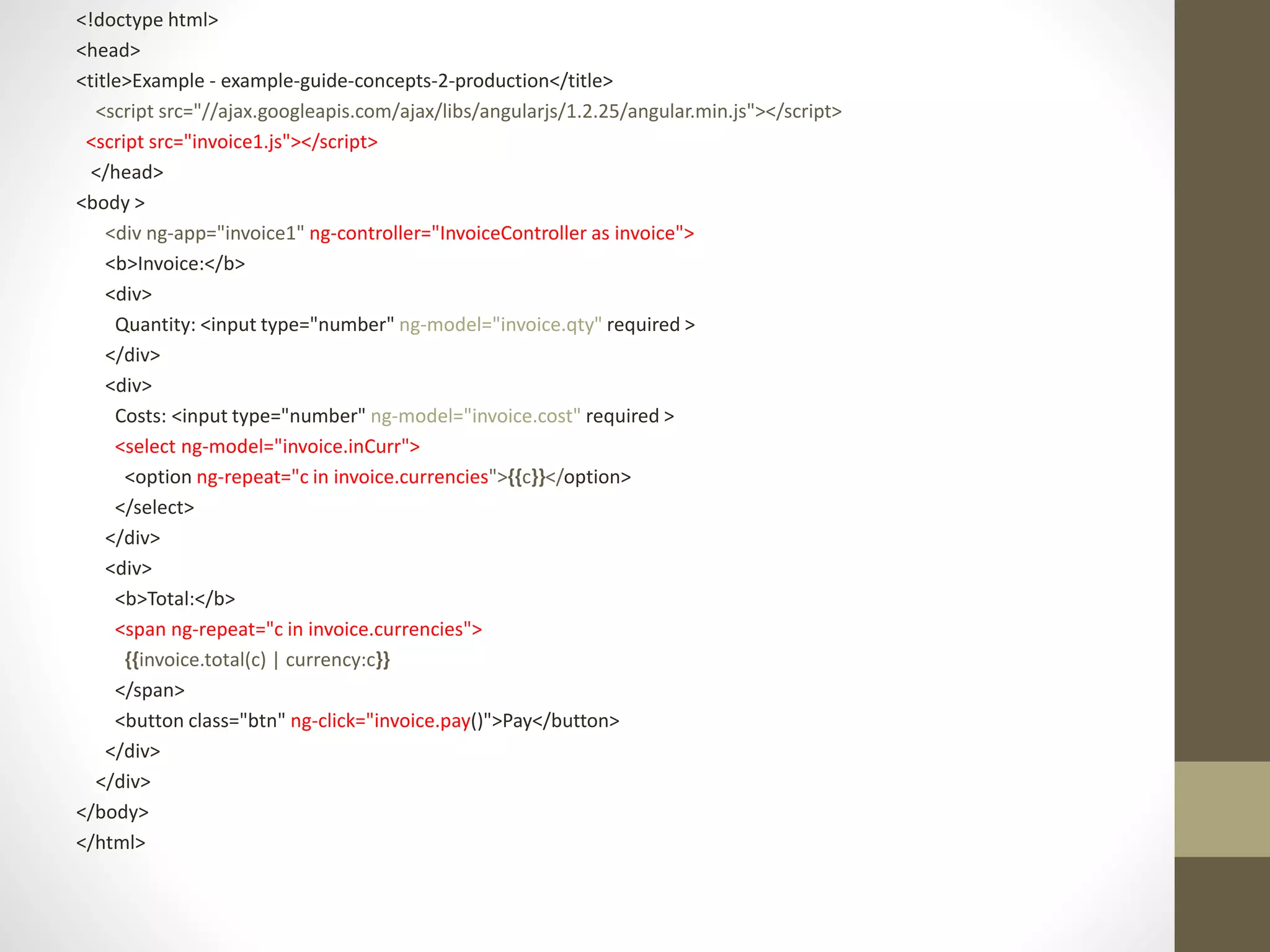
![Invoice.js angular.module('invoice1', []) .controller('InvoiceController', function () { this.qty = 1; this.cost = 2; this.inCurr = 'EUR'; this.currencies = ['USD', 'EUR', 'CNY']; this.usdToForeignRates = { USD: 1, EUR: 0.74, CNY: 6.09 }; this.total = function total(outCurr) { return this.convertCurrency(this.qty * this.cost, this.inCurr, outCurr); }; this.convertCurrency = function convertCurrency(amount, inCurr, outCurr) { return amount * this.usdToForeignRates[outCurr] / this.usdToForeignRates[inCurr]; }; this.pay = function pay() { window.alert("Thanks!"); }; });](https://image.slidesharecdn.com/angularjs-150305144828-conversion-gate01/75/intro-to-Angular-js-17-2048.jpg)
